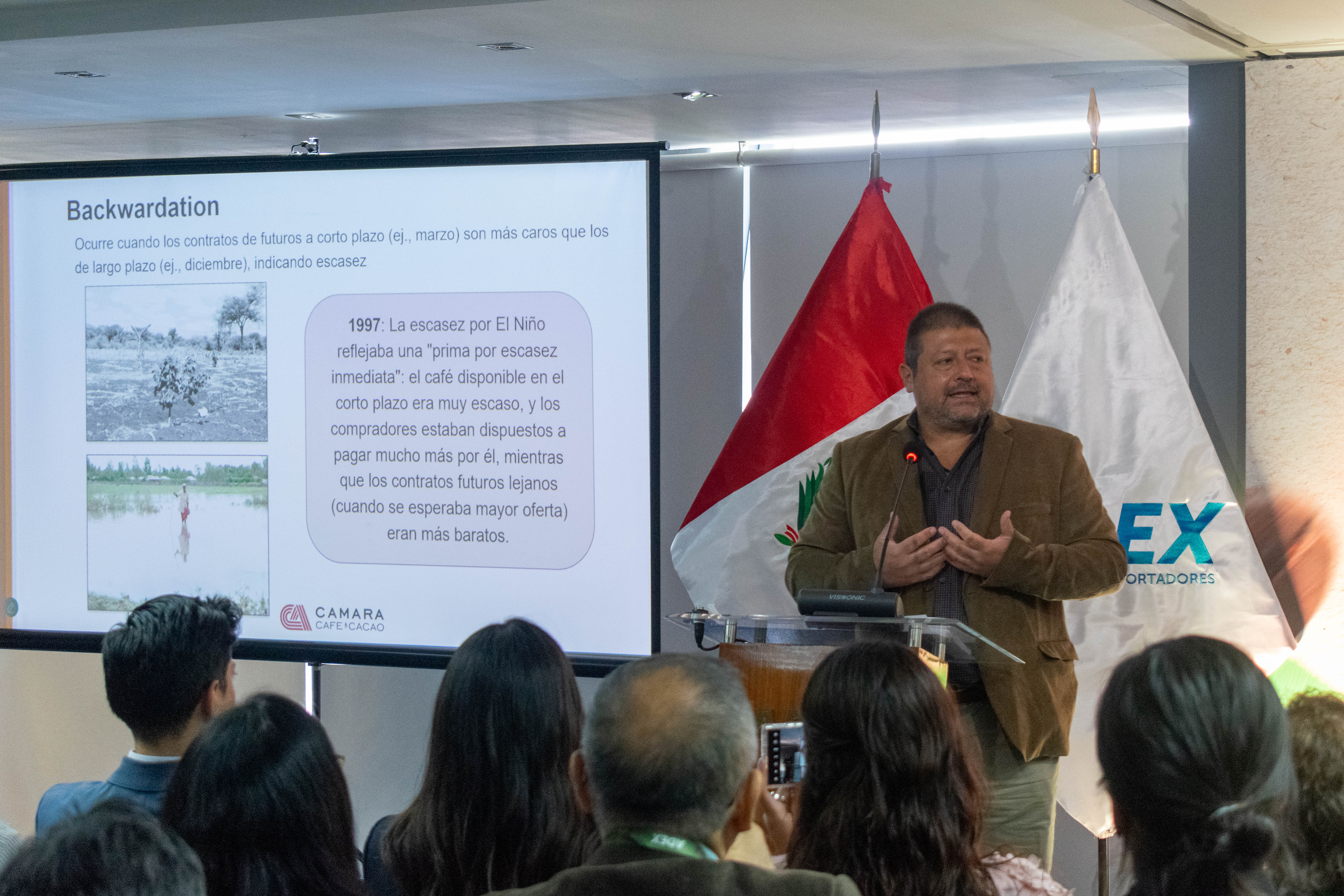15 de May 2025 | Coffee
Coffee Market Trends: Opportunities and Challenges for Peru
As part of the recent "1st COCOA AND COFFEE TRADE FORUM" organized by ADEX, the Peruvian Chamber of Coffee and Cocoa presented an analysis of current trends, highlighting their impact on the Peruvian coffee sector and strategies to face this evolving landscape.

A Volatile Market with Historical Roots
The history of the coffee market is marked by recurring cycles of volatility. Events such as the 1997–1998 El Niño phenomenon pushed prices to $318 per quintal due to droughts in Vietnam and a shortage of fine coffees. Conversely, in 2001–2002, global overproduction—driven by a 43% increase in Brazil’s output—led prices to fall to a low of $44 per quintal. In more recent years, adverse weather conditions in Brazil, combined with new European Union regulations, have driven prices to a historic high of $438 per quintal in May 2025, the highest level in 50 years. This price surge is driven by a combination of climate factors and production shortages. However, although high prices persist, they are unlikely to last, as the market tends to self-correct and a downtrend is approaching.
Historical NY Stock Exchange Prices (1995–2025)
Current Dynamics: Backwardation and Shortages
The coffee market is currently experiencing a state of backwardation, in which short-term futures prices (e.g., March 2025) are higher than long-term prices (e.g., December 2025), due to an immediate coffee shortage. This phenomenon, reminiscent of what occurred in 1997 after the El Niño impact, is linked to a reduction in Arabica production and a 15.3% drop in Vietnam’s Robusta exports. In this current price surge cycle, the market has been in backwardation for over 450 days, compared to over 500 days during the 1997–1998 period—suggesting a similar duration of supply tightness and short-term price pressure.
Arabica vs. Robusta Arbitrage: A Peruvian Advantage
The price differential between Arabica and Robusta reached 155 cents per pound in 2025—a record driven by weather conditions and growing demand for specialty coffee. While droughts affect Arabica, Robusta maintains a more stable supply, albeit still impacted by typhoons.
Peruvian Production and Exports: Resilience and Potential
Despite global volatility, Peru has maintained a stable production level of between 6.4 and 6.8 million 60-kg bags from 2012 to 2024, with exports exceeding 4 million bags in 2024. This performance, fueled by record prices and growing demand in markets such as the United States (which accounts for 28% of exports), positions Peru as a leading coffee exporter.
Towards a Sustainable Future: Strategies and Outlook
In response to this landscape, the Chamber proposes key strategies to strengthen the sector: using futures contracts and price insurance to manage risks, diversifying beyond the U.S. and European markets, adopting climate-resilient sustainable practices, and boosting productivity in coffee-growing regions. In the short term, high prices will persist due to limited supply and EU regulations. In the long term, climate change and competition with other crops present risks, but Peru has the potential to solidify its leadership in sustainable coffee.
The Chamber invites producers, importers, exporters, and the general public to join this transformation by participating in the 27th National Coffee and Cocoa Convention: Adapting Strategies in a Changing Landscape, which will take place on May 29–30 at the José Antonio Deluxe Hotel in Miraflores. Since 1997, this event has brought together the sector’s key players to analyze global dynamics and strengthen competitiveness—this year focusing on the opportunities and challenges of international trade following a year of price and supply volatility.